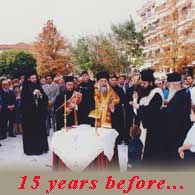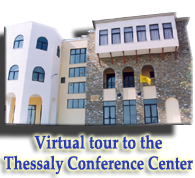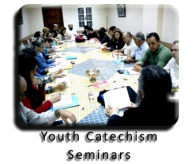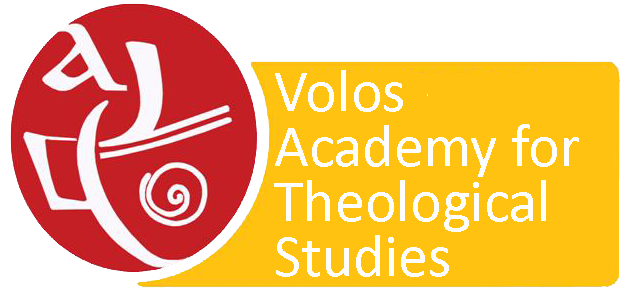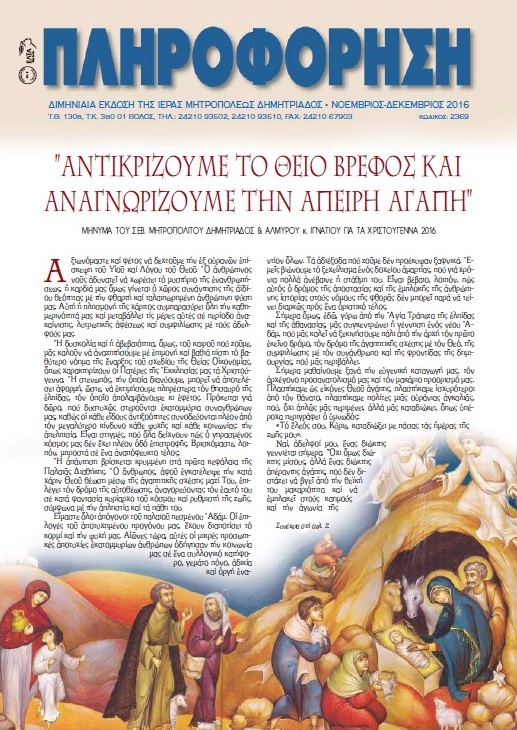History
Mythical and prehistorical years
The history of this land extends to ancient times and is intermingled with myth.
Ancient Iolcos, which archaeologists locate in the present-day neighborhood of "Palia" in Volos, was the place where the Argonauts set out for Colchida in their ship, the "Argo." Mt. Pelion is where the marriage of Pilea and Thetis took place and where the centaurs fought the Lapiths. It is also the home of the famous centaur Chiron, who taught the art of medicine to Asclepius and brought up the blond Achilles and the adventurous Jason.
The prehistoric settlements of this area, such as those discovered at Dimini and Sesklo, date back to 7000 BC. Findings from the excavations that took place there, as well as other important objects from antiquity, are on display at the Archaeological Museum of Volos. The landscape was ideal for early inhabitants, at its seafront provided convenient access to the shores of Asia Minor just across the Aegean. The ruins of an acropolis are preserved at the area of "Soros,"just outside of Volos, as is also the ancient theatre of Demetiras, which was a city between today's Alikes and Boumboulithra. These, combined with the remnants of the ancient aqueduct system, among other things, bear witness to the area's long history of civilization.
To the west is Velestino, formerly known as Pherai, one of the most ancient and important towns in Thessaly, dating to 3000 BC. There, history enthusiasts can visit the prehistoric settlement of MagoulaBakali, the classical citadel,the remnants of the city walls, the ruins of the temple of Thaulios Zeus, the YperiaKrini, known from Homer's epics, and more. Pherai, in addition to being the hometown of the mythical kingsAdmitos and Alkistis, is known more recently as the birthplace of RigasFeraios,one of the leaders of the Greek Revolution.
The early Christian years
There is no documentary or archaeological evidence of Christian presence in the region of Μagnesia prior to the 5th century AD. Ιn 430 AD, we have the signature of Bishop Kleonikos of Demetriasin the Acts of the Third Ecumenical Council. Archaeologists have discovered the remains of huge basilicas and associated buildingdating to that time in New Anchialos,known in ancient times as Fthiotides Thebes. There, inscriptions reveal that Bishop Peter was a driving force for the development of extensive religious and social activity. A succession of basilicas werebuilt either on top of the ruins of previous onesor side by side, together with other edifices of an ecclesiastical and social character.
The Subsequent years
The area came to know many conquerors. The Goths (396 AD), the Slavs (6th century), the Saracens, the Franks (1204 AD), and the Turks (1428) all passed through the area.
The local inhabitants, frightened, abandoned their homes and ascended Mt. Pelion. The names of their towns changed several times, they went through repeated "Babylonian captivities," but they never capitulated.
During the years of Turkish domination, Pelion enjoyed some freedoms, since itwas under the protection of the queen mother, theValideSoultana.
The great and renowned clergymen and teachers of the Greek people,Anthimos Gazes, Daniel Philippides, and Gregory Konstantas were born and raised in Milies. RigasFeraios, sets out from his homeland, Velestino, in order to stir up the enslaved Greeks, and became the forerunner of great individuals such as Kostas Garefis from Milies, StergiusBasdekis from Lambinou, ΜarigoSkenderanis from Pouri, Margaret Basdekis from Makrinitsa, et al, who were distinguished for their struggle against the Turks along with thousands of other strugglers, known and unknown. All of them fought for freedom under the shadow of the Cross. Their aim was "for the cross to shine over the land and the sea," as RigasFeraios chanted in his "Thourio." And their vision came true.
Famous local individuals
Α whole multitude of notable individuals distinguished themselves in academia, the arts, politics, the social realm, national struggles. Amongst them we could note particularly:
Our national heroes: RigasFeraios, KyriakosBasdekis, MarigoSkenderani, Margaret Basdeki,LenioKamenou, John of Filados(of the Society of Friends from Zagora), George Damesis(also a Friend), and Nicholas Filaretos from Promyri, as well as the great ship captains from Trikeri who fought in 1821 such as Kopsidakis, Lemonis,Koumbourelis, Vriniotis, Constantine Koutmakis, and others.
The eminent scholars:Zosimas of Esphigmenou, Daniel the Magnis, and AnthimosGazis.
Teachers of the Greek people: Gregory Konstantas, Daniel Phillipidis, ΡatriarchKallinicus the Third from Zagora.
Social workers and benefactors: Εvangelos and Sophocles Achillopoulos who gave money for the foundation of the Hospital of Volos, Ν. Nanopoulos who offered money for the completion of the road which joined the railroad station at Milies with Tsagarada. DemetriosPolymeris who left his estate for works of social benefit to be done in Zagora, his birthplace, DemetriosKassavetis from Zagora, John Prigos from Zagora who founded its library, Α. Ρantos from Zagora who founded the Ρanteios School, the Kritski brothers, and others.
Our contemporaries: CleanthisTriantafyllou or Attik from Tsagarada, Nicholas Pantazopoulos from Mouresi,Constantine Vourveris from Katichori,professor of History in the Faculty of Philosophy and founder of the Center for the Humanities in his village, G. Kaniskeris from Makryrahi who left money for roads and for an orphanage, Demetrius a professor of midwifery, the sculptor Nicholas from St.George Nileias, Nicholas Georgiadis from Portaria, Α. Athanasakis also from Portaria, who with his own money founded the Archaeological Museum of Volos, PantazesVasanis who left money for the foundation of the school, and to whom the village owes its water system and a wing of the "Annunciation" Hospital, Mr. Κ. Stournas from AlliMeria, Α. Kassavetis from Zagora who founded the juvenile reformatory, K.Geskos a painter, Ν. Gounaropoulos, a painter, and others.
Το all of them and to many others, both in the past and more recently, this area owes a great debt of gratitude.
The years of German Occupation
In the years of the German occupation, the Church, under the enlightened guidance of Metropolitan Joachim,struggled for the survival of the people.
The bishop served as an intermediary between the occupation forces and the rebels, and parishes rationed meals,as well as medical provisions and services, that saved thousands of people from starvation and death. Ιn the subsequent years, the Church was in the front line in the struggle to support the people's social struggles.










